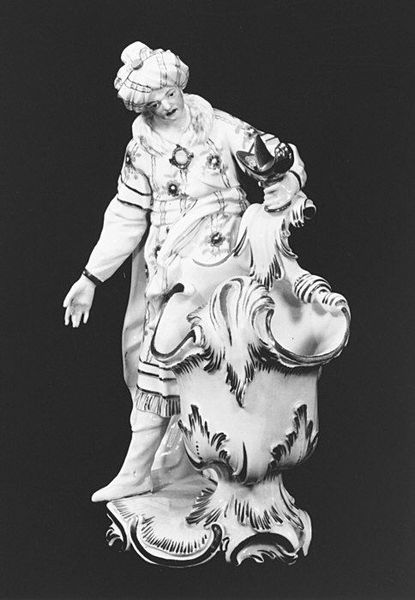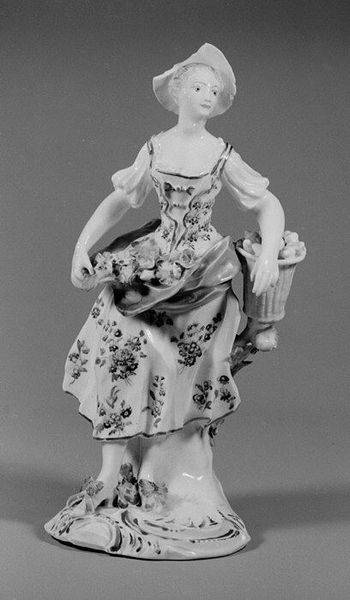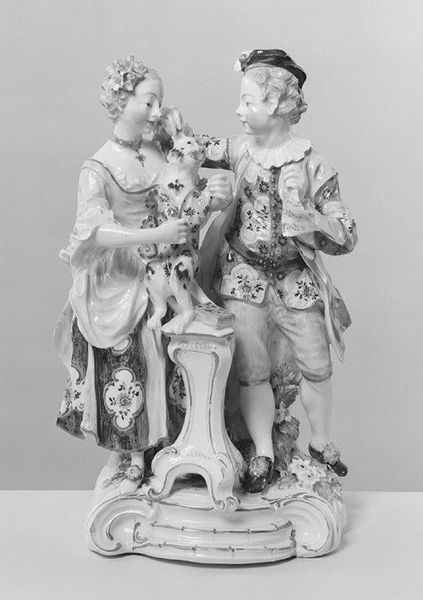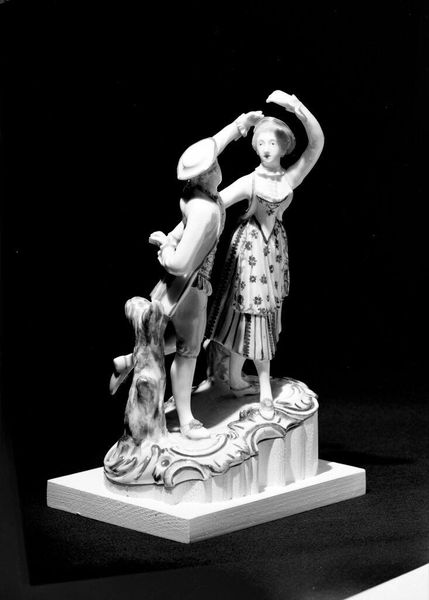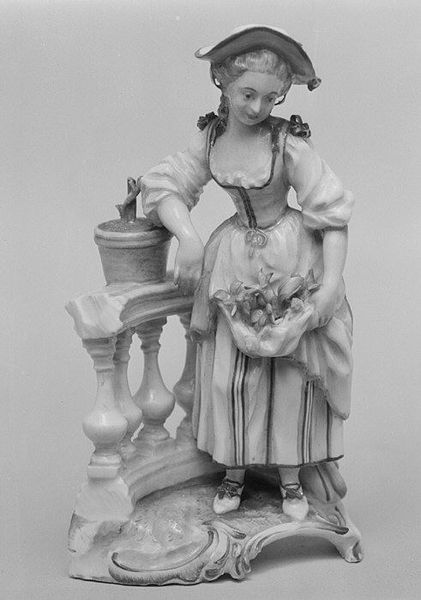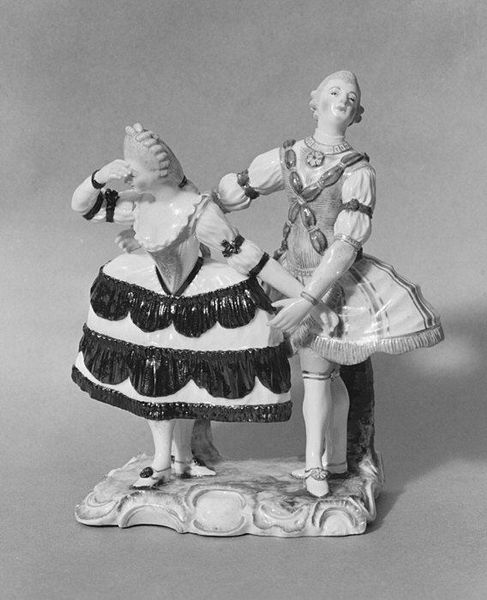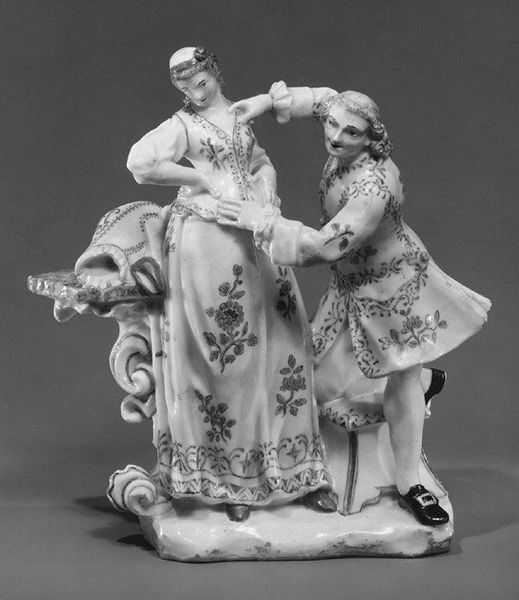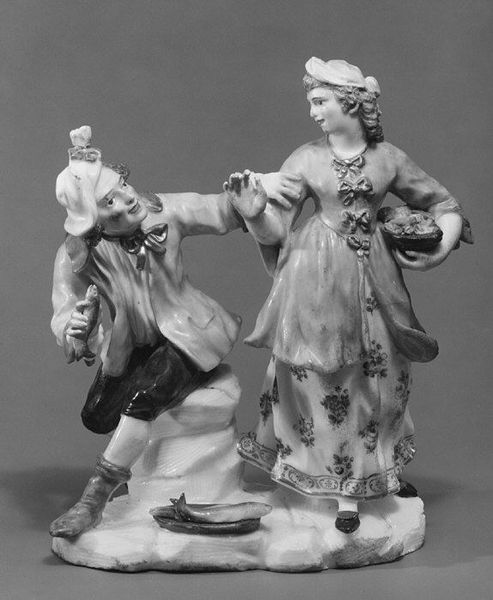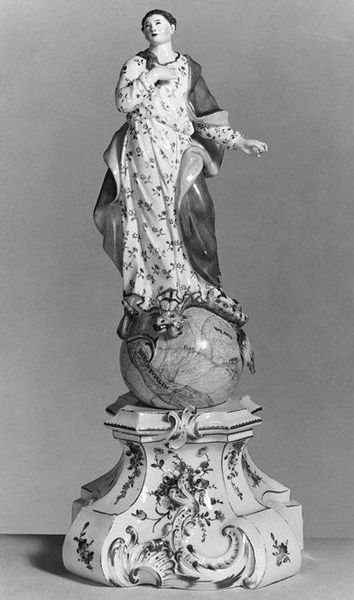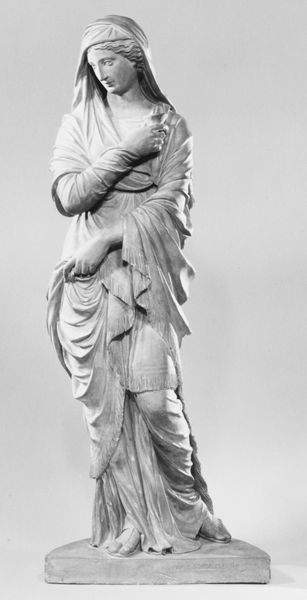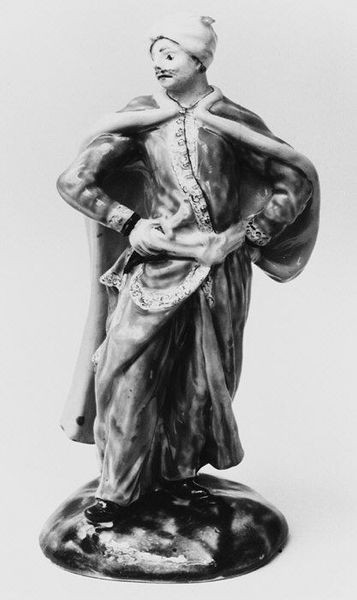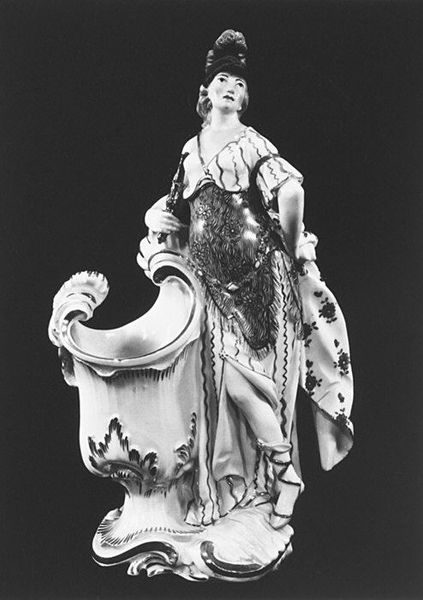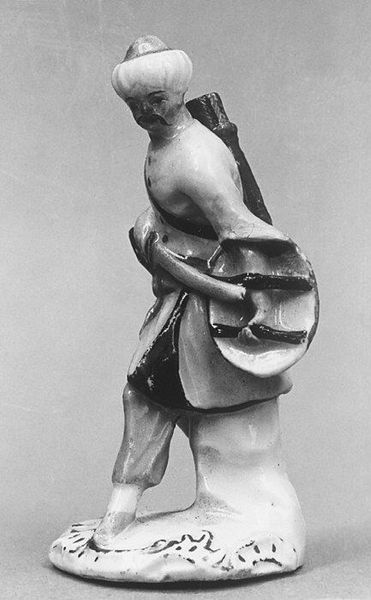
ceramic, porcelain, sculpture
#
sculpture
#
ceramic
#
porcelain
#
figuration
#
sculpture
#
decorative-art
#
miniature
#
rococo
Dimensions: Height: 3 3/4 in. (9.5 cm)
Copyright: Public Domain
Curator: What immediately strikes me is the playful extravagance of this "Scent Bottle," dating from the 18th century and created by the Meissen Manufactory. It's currently housed here at the Metropolitan Museum of Art. Editor: My first thought? It’s a delicate, whimsical scene rendered in porcelain. The smooth, cool texture contrasts with the dynamism of the pose. A charming, yet slightly unsettling, combination. Curator: Absolutely. Considering its history, these scent bottles were luxury items, reflecting the aristocratic culture of the time. The figure's dress and posture are deliberate markers of social standing and a performance of wealth. We might consider what that wealth cost others, especially during an era defined by unequal colonialist trade and enslavement. Editor: That's an important perspective. Visually, the curves of the bottle itself, decorated with painted flowers, echo the gentle roundness of the figure, creating a harmonious unity. The silver rooster stopper, though, adds an intriguing vertical thrust, a playful counterpoint. Curator: The choice of a rooster atop this delicate object does introduce an interesting element of the masculine, almost virile, symbol placed above the perfumed femininity suggested by the vessel and figure. It’s a fascinating gendered juxtaposition, playing into social expectations. One could see the choice as either complementing or undermining conventional aristocratic portraiture. Editor: Precisely! And I can't help but analyze the flow of the drapery and the crispness of the porcelain, both contributing to its almost hyper-real quality. Semiotically, each detail feels intentional, calculated to project refinement. Curator: It is vital to acknowledge that such displays of opulence coincided with significant social inequalities. Artworks like this were often intended to obscure the material realities that undergirded them. Therefore, by engaging art history and theory, it helps us decode the complexities of such seemingly benign items. Editor: It is definitely an intricate layering of form and intention, that demands a close, sustained viewing. A microcosm of a bygone era. Curator: It indeed prompts us to think critically about luxury, power, and representation in history. Editor: Yes. A small object containing very big ideas.
Comments
No comments
Be the first to comment and join the conversation on the ultimate creative platform.
